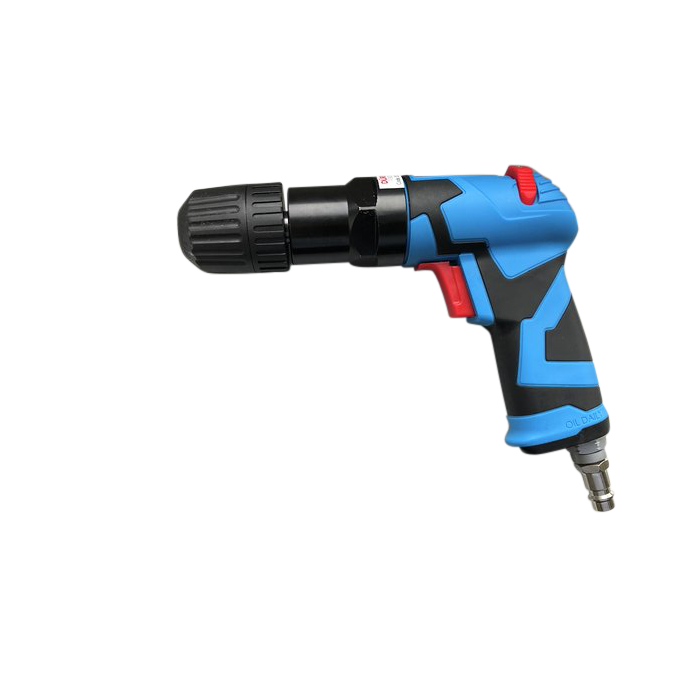|
Why use a Reversable Air Drill
|
| |
|
A reversible air drill is useful because it offers both forward and reverse rotation, which gives you a lot more control during drilling or fastening jobs. Here's why you'd want to use one:
|
| |
|
Easy removal of screws or fasteners: If you're drilling screws in and need to back them out (like when correcting mistakes or disassembling parts), the reverse function is essential.
|
| |
|
Unjamming drill bits: If the bit gets stuck or jammed in the material, you can switch to reverse to safely back it out without damaging the workpiece or the tool.
|
| |
|
Versatility: It’s handy for tasks beyond just drilling – like tapping threads or working with certain fastening systems where both directions are needed.
|
| |
|
Efficiency: Instead of manually reversing tools or switching to a different one, you can quickly change direction, saving time on the job.
|
| |
|
Better control: For delicate materials (like plastics, composites, or thin metals), reverse can sometimes help reduce the risk of cracking or splintering at the finish.
|
| |
|
They're especially popular in automotive work, construction, manufacturing, and general maintenance industries.
|
| |
| |
| |
| |
|
The benefits of using a Reversable Air Drill
|
| |
|
1. Versatility
|
|
A reversible air drill can switch between forward and reverse motions, making it ideal for drilling, tapping, and removing fasteners. It covers more tasks with one tool.
|
| |
|
2. Easy Fastener Removal
|
|
When you need to back out screws, bolts, or stuck drill bits, the reverse function makes removal quick and easy without damaging your material or fasteners.
|
| |
|
3. Better Control
|
|
Switching to reverse allows for more control when finishing delicate work, reducing the risk of splintering, cracking, or stripping materials.
|
| |
|
4. Saves Time
|
|
Instead of manually removing screws or resetting bits, you simply flip a switch — keeping your workflow fast and efficient.
|
| |
|
5. Increased Safety
|
|
If a bit binds or seizes, reversing the drill can safely extract it without sudden jerks that could cause injury or material damage.
|
| |
|
6. Professional Results
|
|
Because you can quickly correct errors and remove hardware neatly, reversible air drills help maintain a high-quality, professional finish.
|
| |
|
7. Ideal for High-Volume Work
|
|
In automotive, manufacturing, or maintenance jobs where repeated fastening and unfastening are needed, a reversible air drill improves productivity significantly.
|
| |
|
8. Durable and Low Maintenance
|
|
Like most pneumatic tools, air drills tend to be lightweight, durable, and require less maintenance compared to electric drills, making them perfect for tough jobsite conditions.
|
| |
| |
| |
|
Uses and applications of a Reversible Air Drill
|
| |
|
Uses:
|
| |
|
Drilling Holes: In metals, plastics, composites, and wood — both in assembly lines and construction work.
|
| |
|
Fastening and Unfastening Screws/Bolts: Perfect for driving screws in and backing them out with precision.
|
| |
|
Tapping Threads: Cutting internal threads (especially in metalworking) requires reversing to back the tap out cleanly after threading.
|
| |
|
Deburring or Polishing: With the right attachments, you can use a reversible air drill for light deburring or surface finishing tasks.
|
| |
|
Removing Stuck Drill Bits: If a bit jams in the material, reverse mode allows easy removal without damaging the workpiece.
|
| |
| |
| |
|
Applications:
|
| |
|
Automotive Repair and Maintenance: Drilling into body panels, working on engine components, installing/removing hardware.
|
| |
|
Metal Fabrication: Creating holes, tapping threads, or reworking parts in manufacturing and fabrication shops.
|
| |
|
Construction and Carpentry: Framing, building, and assembling structures where reversible action helps with temporary fastening or corrections.
|
| |
|
Aerospace Assembly: Precision drilling and fastening in lightweight materials where both forward and reverse are necessary.
|
| |
|
Industrial Manufacturing: Used on production lines for fast, repetitive drilling and screw driving where durability and speed are essential.
|
| |
|
Furniture Assembly: Drilling pilot holes and driving screws into wood or metal frames with easy adjustments.
|
| |
|
Maintenance and Repair Operations (MRO): General facility maintenance, machinery assembly, or field service repairs.
|
| |
|
Marine Industry: Drilling and fixing components in boats and offshore structures, where corrosion-resistant pneumatic tools are preferred.
|



